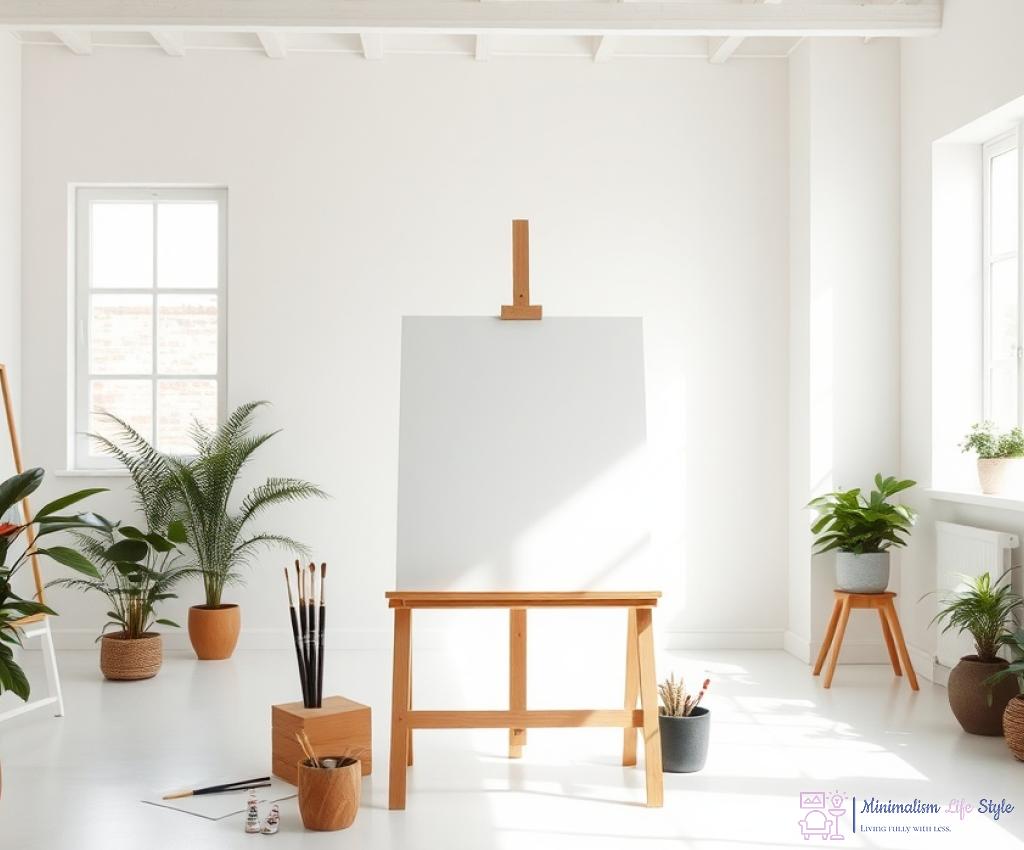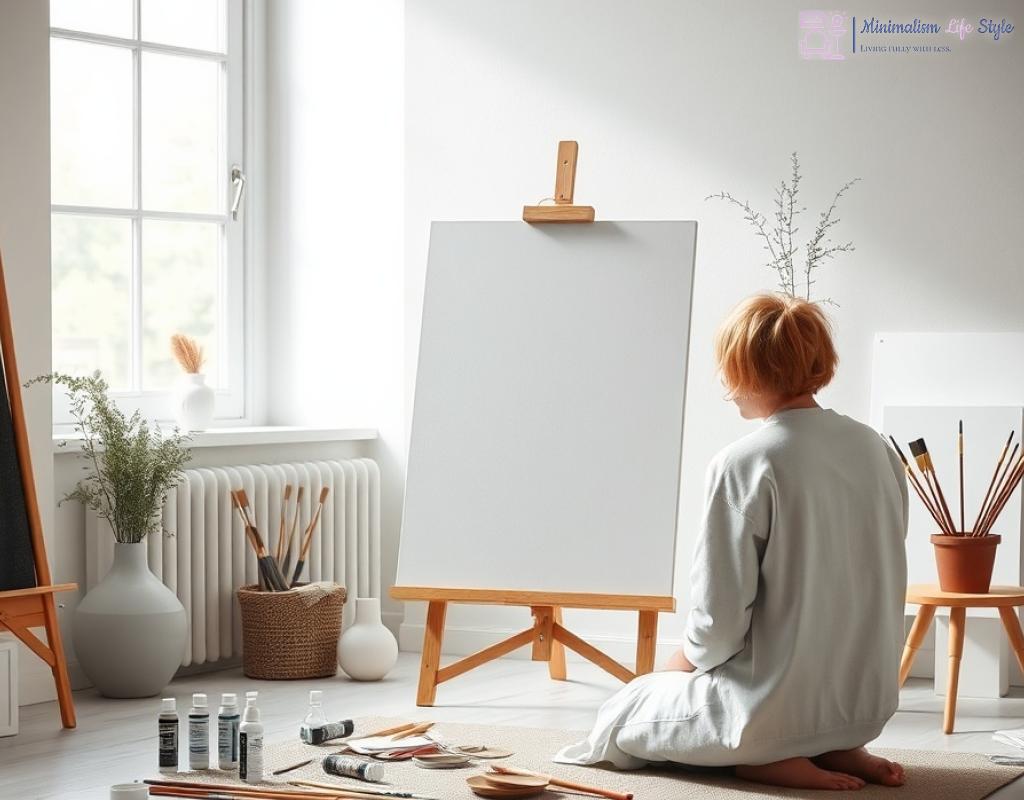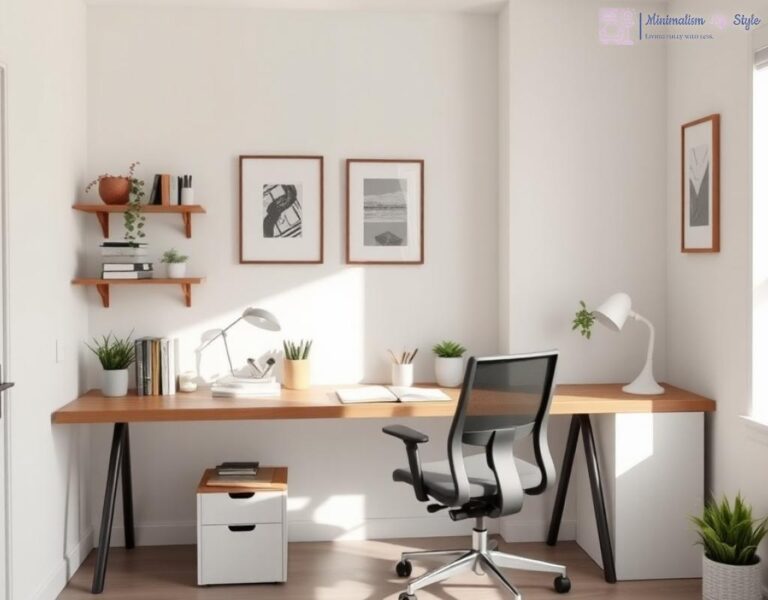The Beauty of Less: Embracing Minimalist Art

In a world overflowing with visual stimuli, minimalist art serves as a sanctuary, inviting us to pause and reflect. This artistic movement, characterized by simplicity and clarity, encourages both artists and viewers to appreciate the beauty found in restraint. The act of creating with limited supplies not only challenges creativity but also fosters a deeper connection with the artwork itself. Minimalism reminds us that less can indeed be more, allowing the essence of an idea to shine through without the clutter.
When artists embrace the concept of minimalism, they often find empowerment in the constraints of limited supplies. This limitation can spark innovative ideas and invite an exploration of materials that might otherwise be overlooked. By focusing on a select few elements—be it color, form, or texture—artists can delve deeper into the nuances of their craft. The challenge lies not in what is missing, but rather in what can be achieved with what is available.
Consider the following list of essential supplies that can amplify creativity in minimalist art:
- Graphite Pencils
- Charcoal Sticks
- Acrylic Paints
- Canvas or Heavy Paper
- Brushes of Various Sizes
Each of these supplies allows artists to express complex ideas using simplicity, creating works that resonate on a profound level.
Inspiration for minimalist art can be found in the everyday world around us. Nature, architecture, and even personal experiences can serve as a backdrop for artistic expression. The beauty of minimalist art lies in its ability to capture the essence of a moment with precision and clarity. Artists are encouraged to seek inspiration in simplicity, allowing their surroundings to inform their work without overwhelming it. This approach not only nurtures creativity but also cultivates mindfulness, inviting viewers to engage with the art on a deeper level.
As we explore the beauty of minimalism, we realize that great art does not always require complexity. Sometimes, it is the sheer elegance of simplicity that speaks volumes.
Creative Constraints: Fostering Innovation with Limited Materials

In a society where excess often overshadows simplicity, the notion of creative constraints emerges as a powerful catalyst for innovation. When artists are faced with limited materials, they are compelled to think outside the box, transforming obstacles into opportunities. This transformative process not only enhances their artistic skills but also nurtures a mindset that values ingenuity over abundance. By embracing the challenge of working with fewer resources, creators embark on a journey that celebrates resourcefulness and imagination.
When artists confront the limitations imposed by minimal supplies, they often discover new ways to express their ideas. For instance, a single brushstroke can convey a multitude of emotions when paired with thoughtful color choices. This practice encourages artists to explore the relationship between form and function, leading to a more profound understanding of their craft. The act of reducing complexity allows for a deeper examination of the elements that truly matter, often resulting in unexpected and powerful outcomes.
Consider how artists can utilize everyday objects that may typically be overlooked. A piece of cardboard could become a canvas for intricate designs, while household items might be repurposed as tools for creation. This innovative approach not only fosters a sense of playfulness but also opens the door for artists to connect with their environment in new and meaningful ways. By working within the boundaries of their materials, they cultivate a deeper appreciation for the art of creation itself.
| Material | Potential Uses | Creative Outcomes |
|---|---|---|
| Paper | Collage, Drawing | Layered Textures |
| Natural Materials | Installation Art | Nature-Inspired Aesthetics |
| Found Objects | Sculpture, Mixed Media | Unique Narratives |
In essence, the beauty of working with limited materials lies in the freedom it provides for artists to explore uncharted territories of their creativity. By pushing the boundaries of traditional art forms, they engage in a dialogue with their surroundings, crafting pieces that resonate with authenticity and depth. This exploration not only enriches their portfolios but also instills a lasting appreciation for the essence of simplicity in art.
Mindful Creation: The Process of Simplifying Art
In today’s fast-paced world, where distractions abound and complexity reigns, the practice of mindful creation through art emerges as a vital antidote. This journey of simplification invites artists, both seasoned and novice, to strip away the superfluous and uncover the essence of their creative voice. By engaging with the process of simplifying art, one can cultivate a deeper understanding of self-expression, allowing for a more profound connection between the artist and their work.
At its core, mindful creation is about presence—an awareness of the materials, emotions, and intentions that shape each piece of art. When artists embrace this approach, they find themselves liberated from the pressures of perfectionism and the need for intricate designs. Instead, the focus shifts to the subtleties of form and color, where every brushstroke or mark becomes a deliberate choice rather than a mere afterthought. This awareness fosters a sense of peace and clarity, transforming the act of creation into a meditative practice.
As artists embark on this path, they often discover the beauty of repetition and restraint. By limiting their tools and techniques, they can hone in on the core principles of their artistic expression. For example, an artist may choose to work exclusively with a monochromatic palette, allowing them to explore the depth of shades and tones without the distraction of multiple colors. This simplification not only enhances their understanding of contrast and composition but also promotes an appreciation for the intricate beauty found within simplicity.
The transformational process of mindful creation encourages experimentation and playfulness. Artists are invited to let go of preconceived notions and expectations, embracing the unpredictability that comes with working with fewer resources. This spirit of exploration can lead to unexpected revelations and innovative techniques that might not have surfaced in a more traditional, resource-abundant setting. By viewing limitations as an invitation to innovate, artists can push the boundaries of their creativity and uncover unique narratives that resonate with their audience.
From Clutter to Clarity: Transforming Ideas into Minimalist Masterpieces
In the intricate dance of creativity, where ideas often compete for attention, the journey from chaos to clarity can be a profound experience for artists and students alike. Embracing minimalism in art not only encourages the elimination of excess but also facilitates a deeper understanding of one’s creative voice. When artists learn to distill their thoughts into simple forms, they uncover the essence of their ideas, transforming cluttered concepts into striking minimalist masterpieces.
To embark on this transformative journey, it’s essential to start with a clear intention. Artists should ask themselves what they hope to convey through their work. This focus allows for a more disciplined approach to creation, ensuring that each element included serves a purpose. By stripping away unnecessary details, artists can highlight the core message of their artwork, inviting viewers to engage on a more profound level. This clarity not only enhances the artist’s expression but also fosters a stronger connection with the audience, who can appreciate the depth behind each brushstroke.
Unleashing Creativity Through Simplification
As artists delve into the process of simplification, they often find themselves faced with the challenge of choosing which elements to retain and which to discard. This decision-making process is crucial, as it sharpens their ability to discern what truly matters in their artistic expression. For example, instead of employing multiple colors and complex designs, an artist might focus on a singular hue, exploring its shades and tones to convey emotional depth. This approach not only fosters innovation but also reveals the beauty that lies in restraint.
Moreover, the act of reducing complexity in art can lead to surprising discoveries. By working with fewer materials, artists can develop a more intimate relationship with their tools, learning to manipulate them in novel ways. This exploration often leads to unique techniques that emerge from necessity, enriching the creative process and encouraging a playful spirit. The transformation from clutter to clarity becomes a journey of personal growth, where each artwork serves as a testament to the artist’s evolving understanding of their craft.
Engaging the Audience: The Power of Minimalism
In a world saturated with visual noise, minimalist art stands out as a beacon of simplicity and elegance. When artists embrace the minimalist philosophy, they not only create artworks that are visually striking but also engage their audience in a meaningful dialogue. Each minimalist piece invites viewers to pause, reflect, and connect with the emotions embedded within the work. The clarity achieved through minimalism allows for a more profound appreciation of the artistic intentions, fostering a deeper emotional resonance.
Furthermore, the process of teaching minimalism through art can empower students to explore their own creative voices. By guiding them through the steps of simplifying ideas and focusing on essential elements, educators can help cultivate a sense of confidence and self-expression. This journey toward clarity not only enhances artistic skills but also encourages students to embrace their individuality, celebrating the unique perspectives they bring to their creations. As they transform cluttered thoughts into minimalist masterpieces, they gain valuable insights that extend beyond the canvas, enriching their overall approach to life and creativity.
Teaching Techniques: Engaging Students in Minimalist Art Practices
In a world where creativity often seems synonymous with abundance, teaching students how to embrace minimalism can be a transformative experience. By introducing them to the beauty of limited supplies, educators can open the door to innovative thinking and profound self-expression. The goal is not only to teach art but to cultivate a mindset that values simplicity and clarity, allowing students to discover their unique artistic voices.
Empowering Exploration Through Constraints
When students are encouraged to work within defined boundaries, they often uncover unexpected depths of creativity. This approach fosters a sense of empowerment, as they learn that true artistry does not rely on an extensive array of materials. Instead, they begin to recognize the potential of what they already possess. By guiding students to use everyday items—such as scraps of paper, natural elements, or even discarded objects—they can explore the concept of resourcefulness. This not only nurtures creativity but also encourages a deeper connection to their environment. As they manipulate these limited materials, students gain insights into the essence of their ideas, leading to the creation of impactful works of art.
Fostering a Mindful Artistic Practice
Integrating mindfulness into the teaching of minimalist art practices can significantly enhance students’ engagement. By encouraging them to slow down and focus on each brushstroke or mark made, educators help students cultivate a deeper awareness of their creative process. This practice invites students to reflect on their intentions and emotional responses, transforming the act of creation into a meditative experience. As students learn to appreciate the subtleties of their work, they develop a greater understanding of composition and visual balance. Simple exercises, like creating a piece with a limited color palette or focusing on a singular shape, can serve as effective tools. These challenges not only promote mindfulness but also empower students to experiment without fear of failure.
Encouraging Peer Collaboration and Feedback
The journey of creating minimalist art can be enriched through collaboration and constructive feedback. By fostering an environment where students share their work with peers, they can gain valuable perspectives that enhance their understanding of minimalism. Encouraging dialogue about each other’s intentions and choices not only broadens their artistic horizons but also builds a sense of community. This collective exploration allows students to realize that simplicity can be a powerful connector, engaging audiences in ways that complex works might not achieve. As they discuss and critique each other’s creations, students learn to articulate their thoughts and feelings, thereby deepening their connection to their own artistic practice.




